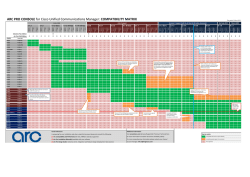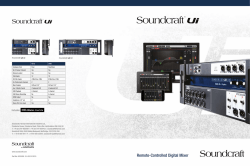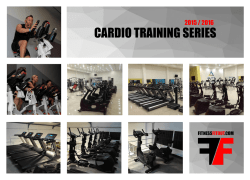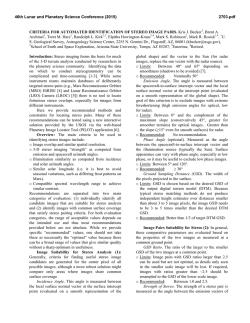
Productos Archive - REFLEXION-ARTS
AUDIENT PARTICIPATION AUDIENT PARTICIPATION : March 2000 Audient ASP 8024 High-resolution Analogue Mixing Console Published in SOS March 2000 Reviews : Mixer Print article : Close window Digital mixers may have become fashionable in recent years, but analogue consoles still have a lot to offer. Hugh Robjohns takes a look at a high-spec, mid-budget in-line console from newcomers Audient. Deciding which console to buy is never an easy decision, but the first question has to be: digital or analogue? In post-production environments, the digital desk is the undoubted king thanks to facilities like total automation, repeatable settings, built-in effects and complete integration with digital recorders. However, digital consoles are not always the best tool in a pure recording environment. The ever-higher sample rates becoming available (48, 96, or even 192kHz, not to mention Sony's DSD approach to sampling at just under 3MHz) only move the bandwidth of digital recording closer towards that already achievable with the best analogue systems. There is also an issue over headroom — specifically during A-D conversion — which is often insufficient to cope with the unpredictability of live recording and is generally far lower than that of a decent analogue mic amp. Surprisingly, there are relatively few analogue consoles in the £15-20,000 mid-market recording sector, which is exactly the kind of market sector the owner of a small studio might want to progress into. There are, apparently, over a hundred thousand Mackie 8-buss consoles in use worldwide, with around the same number again of 'equivalents' in various guises. Assuming that just a few percent of these users would want to move upmarket, and that a similar percentage of those would choose to purchase an Audient console, there should be a comfortable number of potential sales. The outcome of all this market research led to the development of Audient's first recording console, the ASP 8024: a high-quality analogue in-line desk intended to meet the demands of an up-and-coming small studio, or to furnish a major studio's B-room. Although Audient might be an unfamiliar name, the men behind it are very experienced console designers: Gareth Davies and David Dearden were the two 'D's of the DDA consoles, so they know a thing or two about analogue mixer design (see the 'Pedigree Chums' box). Specifications And Expectations The ASP 8024 console is a pretty conventional in-line multitrack desk available with between 24 and 60 channels, installed in bays of 12. The name derives from an acronym for Analogue Signal Processing and (with a 36-channel console) the provision of 80 inputs and 24 outputs. My first impression of this desk was of an attractive overall colour scheme and ergonomic layout. This is a very light, restful, spacious and uncluttered console — particularly in the centre section module — which makes it a positive joy to work with over extended periods. The control surface is fabricated with a reverse-printed polycarbonate laminate which is both durable and easily cleaned, and enables the use of backlit displays and legends, making the channel status very clear at a glance. The centre section houses the usual monitoring facilities, miscellaneous functions such as oscillator and talkback, as well as the tape-buss trims, subgroup and master faders, and auxiliary masters. The input channels feature a typical dual-input arrangement — Audient refer to the two paths as the Long and Short fader paths — with the mic or line source normally being processed through the short fader, and the tape return being controlled via the long fader. Simple colour-coding (dark for the short-fader input path and lighter for the long-fader monitor path) is used to make the operation of the console as obvious as possible. This is assisted further by the use of backlit legends to show the signal source at each fader (tape or mic). All illuminated legends and buttons employ LEDs for reliability. AUDIENT ASP 8024 pros Very capable mic amplifiers and electronics throughout. Well engineered with good ergonomics. Easy to use and very versatile. Sets a new benchmark for price/performance. cons None. summary An impressive console with excellent technical specifications and facilities, Easy to use, flexible and with a fine pedigree, despite the unfamiliar name. Each in-line module is equipped with a four-band equaliser along with access to 14 auxiliary sends and 24-track routing to tape. The equaliser can be split between the two signal paths if required, and both have full insert points (operating at -2dBu). Specifying the ultimate analogue sound console is not such a hard job. Anyone who has sat behind a recording console has probably found themselves thinking about what would constitute the perfect desk at some point or another! The challenge is to build such a console at a realistic price, which is where Mackie in particular have excelled. One increasingly popular approach is to employ surface-mount devices and single-board construction, combined with the elimination of expensive modular metalwork. These kinds of techniques have allowed manufacturers like Mackie to produce high-quality consoles at a fraction of the price of their functionally equivalent forebears. Audient have embraced similar practices in the ASP 8024 but, with a higher target price and greater expectations from the intended market, have addressed some of the recognised weaknesses of this approach. For example, although the use of single-board, multi-channel construction is very attractive from the cost point of view, it makes maintenance more difficult than would be acceptable to many potential purchasers of this kind of console. Consequently, a great deal of attention has been paid to providing easy access to the electronics for servicing — each 12-channel module can be hinged from the rear whilst still powered for testing, and is interfaced with just three small ribbon connectors. Virtually all of the reliable components (resistors, small value capacitors, and so on) are surface-mount types, but anything which might require replacement during the life of the console uses conventional parts (electrolytic capacitors, op-amps, switches and so forth). The console electronics are contained on pairs of large printed circuit boards which extend the full width and height of each 12-channel input module and the centre section. In the channel modules, one board lies below the auxiliaries and routing facilities and the second under the equaliser and short fader, each carrying the circuitry pertaining to the controls above. The input stages are contained on a separate board mounted behind the mic/line controls and meters in the upstand at the rear of the console. The channel module width was determined by the area needed for all the circuitry, but a reasonably compact 37mm channel spacing has resulted. Looking through the specifications it quickly becomes obvious that nothing has been skimped at all: the inputs and outputs are all electronically balanced, insert points feature separate send and receive sockets, and the bandwidth, noise, distortion, crosstalk, and headroom figures are all exemplary! The mic preamps illustrate the point well: instead of using a simple off-the-shelf op-amp affair with a couple of transistors at the front end, the Audient employs no fewer than eight transistors in a 'transimpedance amplifier' coupled with a pair of high-spec op-amps. One nice feature of the circuit is that it is able to provide unity gain, eliminating the requirement for a microphone pad switch; line inputs employ the same amplifier stage following a 20dB attenuator for optimal headroom. "Looking through the specifications it quickly becomes obvious that nothing has been skimped at all: the inputs and outputs are all electronically balanced, insert points feature separate send and receive sockets, and the bandwidth, noise, distortion, crosstalk, and headroom figures are all exemplary!" One of the most important design elements of a mixing console is the earthing system — the approach to keeping audio grounds separate from the noisy switch and signalling returns, preventing earth current loops within the console, and minimising crosstalk. Audient achieve this partly with a massive copper bar, which looks a lot like a 15mm water pipe. This runs along the full width of the console, and each channel module is electronically referenced to it. To minimise crosstalk, the console employs quasi-balanced mix busses which, although driven in an unbalanced mode, also carry reference audio grounds from the sending channel and are combined in differential buss amplifiers. To minimise mix buss noise in the ASP8024 the mix buss feed resistors are placed on the channel side of the routing switches so that the amount of buss noise relates directly to the number of channels routed. The console is fitted with ALPS faders and pots as standard, although P&Gs or motorised faders (as part of an Uptown Automation package) can be easily installed if required. Power for the console is provided by a chunky 3U rackmounting linear power unit which is convection-cooled, so there's no fan noise. The console frame is extremely sturdy, with a pair of 2-inch tubes running across the full width to provide structural rigidity to the sheet-steel shell. The 12-channel modules have no structural role and simply drop into 'buckets' formed between the steel bulkheads of the chassis. The mechanical construction allows extra bucket sections to be added in the field if necessary. Tearing Down A Strip The signal paths for the short-fader section start off at the rear panel with an XLR for the mic input and a TRS quarter-inch jack socket for the line input. EDAC connections for the tape sends can be provided along with an internal patchbay. The input signal-conditioning controls are all mounted in the angled metering upstand and are on a dark background to emphasise the link with the short fader path. Facilities include a phantom power button along with polarity reversal, high-pass filtering (12dB/octave from 70Hz) and a mic/line selector button. The gain control covers the range between 6 and 60dB for the mic input and -14 to +20dB for the line input. Another button switches the insert point into circuit via a pair of normalled TRS sockets on the rear panel, and the last switch determines the operation of the channel metering (see below). The insert send can be used as a direct output if required. The source for the long-fader (monitor) path is normally a tape return, which is interfaced via another TRS jack socket on the rear panel. The controls for this input are also in the upstand just above the mic/line section and consist of a gain control (+/-15dB) and a selector for another insert point, which comes via a second pair of normalled TRS sockets on the rear panel. Immediately above the tape input section is a pair of meters associated with this channel strip. The tape-return signal is normally routed to a 20-segment peak-reading LED bar-graph meter which is calibrated with 0dBu equal to -18dBFS. Since the record machine's output will automatically show the input record during record and the 'off-tape' on replay, this meter is normally adequate for level setting. However, it is possible that the input stage could become overloaded, yet still produce a reasonable level signal at the recorder, so a simple three-LED meter is provided alongside to monitor the channel input signal level. These LEDs show Signal Present, 0VU, and Overload. The 'MTR' button in the Mic/Line control section swaps the meter source signals, should it be necessary to have the more accurate metering on the mic/line input. At the top of the main channel strip are 12 output routing buttons, feeding tape sends 1-12, plus a further three configuring buttons. The first of these acts as a 'shift' key to access outputs 13-24, while the second enables the Pan control so that a channel may be routed across a pair of tape sends. The last selects the routing source from the long fader path instead of the short fader, allowing track bouncing and re-tasking of the tape sends as additional effects sends during mixdown. The desk is very well equipped with auxiliary sends: there are 14 aux busses, with six main aux send controls on each channel, plus a further two intended for the foldback (cue) feeds. Although each send has its own independent level control, the first six are configured with paired switching for pre/post selection, sourcing from long or short fader paths, and routing to alternate aux sends (1/2 route to 7/8, 3/4 to 9/10, 5/6 to 11/12). The final two Auxes have red caps to differentiate them and are labelled Aux A and B. Again, pre/post switching is paired, but each has its own selector for long- or short-fader sources. Pedigree Chums David Dearden and Gareth Davies were the founders of DDA, manufacturers of cost-effective, high-quality analogue mixing consoles from the early 1980s — DDA being an acronym for Dearden Davies Associates. After DDA was acquired by Klark Teknik, the two D's decided to leave and get back to what they enjoyed most, which is the market research and detailed design of audio consoles. Audient is the result of that new partnership, formed in November 1998. All the manufacturing is done out-of-house by subcontractors; assembly and testing of the console is actually performed by an ex-DDA engineer who now runs his own business. Likewise, worldwide marketing is handled by Expotus, a specialist company set up by DDA's original sales manager. Small world! The equaliser is a conventional four-band affair providing high and low shelf equalisers in combination with a pair of overlapping swept parametric mids, all normally allocated to the long-fader path. The two shelf sections are provided with turnover frequency switching (10 or 18kHz and 50 or 100Hz), gain controls (+/-15dB), an 'In' button and a second button to switch this equaliser section into the short-fader path. The Swept mids are provided with variable bandwidth controls (0.4 to 2 octaves), +/-15dB gain knobs and centre frequency controls covering 450Hz-20kHz and 50Hz-1.5kHz. Once again, a pair of buttons provides independent 'In' switching for the section and insertion into the short fader path. The 60mm short fader is equipped with illuminated Solo and Cut buttons (the former can operate as PFL, AFL or SIP depending on the settings in the master section), as well as a pan pot, a pair of configuration buttons and a backlit source indicator. Normally, the short fader is used to control the mic/line input, routing it to the tape send busses; the backlit legend will reveal 'Mic', to that effect. If the channels are in the 'flip' mode (see below) the legend will read 'Tape'. Pressing the Source button alongside the Pan control selects the long-fader mic or tape-return signal as its source, in which case the 'LF' legend will be illuminated. This would be useful during mixdown to dispatch tape-return signals (via the tape send routing) for extra effects sends, the fader effectively becoming an aux level control. The second button (Mix) reallocates the output of the short fader, routing it onto the main stereo mix buss. This enables the mic/line inputs to be used as additional sources during mixdown — for handling synchronised MIDI sources, for example. The long-fader section is similarly equipped with Solo and Cut buttons, a pan pot, Mix and Flip buttons, plus another backlit source indicator. Although the Mix button would normally be depressed to send the tape-return signal on to the main mix buss, deselecting it on unused channels reduces mix-amp noise. The Flip button swaps the short and long fader inputs, the illuminated legend reflecting the current source status (Mic or Tape). The fader itself is installed below the channel strip in a separate panel section. If an automation system is employed, the necessary automated channel mute controls are mounted alongside each fader. Centre Section The first thing to say about the centre section is how open and uncluttered it is — there are acres of panel space here! However, it is a different story underneath as all the mix amps, monitoring, tape sends and aux master amp electronics are crammed on another pair of large SMD circuit boards. Starting at the top of the panel, there are 24 tape buss trim controls and 14 auxiliary send masters. The buss trims are simple ±10dB gain controls, one for each tape send, with the tape buss outputs available in three groups of eight via D-Sub connectors on the rear panel (using the Tascam DA88 wiring convention). The Aux masters are simple level controls, scaled from 0 to 10 with individual illuminated Solo buttons and output via rear-panel XLRs. One of the problems with an in-line desk is the difficulty of simultaneously assigning a signal to the same Aux send from both the short and long fader paths within one channel strip, for example to fold back a mic source and its corresponding tape track during a drop-in. Audient have addressed this problem cleverly with the provision of buttons above the aux master controls for Auxes 3-6 and 9-12. These route the outputs of Auxes 3 and 5 into Aux 1, 4 and 6 into Aux 2, Aux 9 and 11 into Aux 7, and 10 and 12 into Aux 8. Prices • • • • 24-channel: 36-channel: 48-channel: 60-channel: £15269. £17255. £23142. £26878. All prices include VAT. Four stereo effects inputs are provided via TRS sockets, each with seven routing switches (six paired sends plus a Shift button) allowing access to all 24 tape sends. There is also an input gain knob (+/-20dB) and a pair of sends to Foldback A and B (as opposed to Auxes A/B — see below). These would typically be used to allow artists to hear reverb as they perform. A rotary fader and the usual Solo and Cut buttons are also provided, along with a button to route the effects return directly into the stereo mix buss. Monitoring The monitoring facilities for the studio are comprehensive with separate, but near-identical, facilities for a set of loudspeakers and two foldback systems, all output via XLRs. Each is provided with source selection (multiple sources mix together) from two external tape returns, the control-room monitoring selection, and the outputs of the A and B aux masters — the last with separate switches to allocate these mono Auxes to left, right, or both channels. The two foldback sends from the stereo effects returns automatically combine with the other selected foldback sources. A master level control is provided for each of the three outputs as well as illuminated Solo buttons for the two foldback sends, and an on/off button for the studio loudspeaker output. Control-room monitoring is equally well catered for, with three external tape returns in addition to the main stereo mix buss. All switching is via gas-filled relays to ensure the monitor path is as 'clean' as possible. There are independent level controls and illuminated selection buttons for three alternate monitoring speaker feeds in addition to the main speakers. Three small buttons offer mono, cut-left and cut-right switching to complement two illuminated buttons providing Cut (all) and Dim (which is also remotely activated when talkback is used). The soloing arrangements are both flexible and elaborate, with global selection of either PFL, stereo AFL, or destructive 'solo-in-place' monitoring. Controls are provided for the overall level of the solo feed as well as the level of 'Solo in Front'. When fully counter-clockwise, the Solo-in-Front control does nothing, but as it is rotated an increasing proportion of the main stereo output signal is mixed back with the soloed signal. This usefully enables a soloed signal to be auditioned in context. The illuminated SIP button routes the soloed channel's AFL signal to the main stereo output of the console, in place of the mix buss, and is hence referred to as destructive. The anciliary facilities of the centre section include an oscillator providing variable-level tone at 40Hz, 1, 10 or 15kHz, which can be routed to the tape-send busses and/or the stereo mix buss. Talkback is simple but includes a mic level control along with latching buttons to route the talkback signal to the studio loudspeaker, foldback outputs, or Slate (tape buss outputs). A optionally phantom powered XLR socket is provided on the meter upstand for a gooseneck talkback mic. The stereo mix buss is equipped with an insert point (two pairs of TRS sockets) and a dedicated stereo compressor, before being output via XLRs. The compressor is much like that found on SSL consoles and provides controls for setting threshold, make-up gain, ratio (2, 4 and 10:1 options), attack and release times (with an auto setting). An illuminated 'In' button introduces the system to the mix path when required, and an LED meter monitors gain-reduction. Across the bottom of the centre section, in front of the ash arm rest, are eight group faders and a master stereo output fader. The group faders pick up the first eight tape send groups and are provided with insert points on the usual pair of TRS sockets, a pan pot, illuminated Solo and Cut switches and a button to route their output to the stereo mix buss. These subgroup outputs are also available at the rear panel via another D-Sub connector. The metering upstand behind the centre section provides 20-segment bar-graph meters for the eight subgroup outputs, the talkback mic XLR socket and a pair of 30-segment meters which follow the monitoring selection (including solo signals). Three discrete LEDs indicate the presence of the correct voltage rails from the PSU. Impressions The ASP 8024 is a very attractive console both in terms of its balance of cost and performance, and its visual attributes. Too many consoles have a gloomy, dark surface which soon becomes fatiguing in a dimly lit control room. The Audient is refreshingly light and airy, which I found very pleasant. There is also plenty of space around the controls, even in the equaliser section, so there will be no scraped fingers or accidentally altered settings. The logic and ergonomics of the control surface are excellent. Everything is very intuitive and has an extraordinarily flat learning curve — something that is far from true of many digital consoles. The performance of the desk is also excellent, both technically and sonically. The equalisers are powerful yet musical, and equally effective for creative tweaking or corrective surgery. The mic amps are quiet and well behaved, and the overall noise floor is very good indeed. The signal path is extremely clean and quiet, adding no sound signature of its own — any desired 'sonic flavouring' needs to be introduced with outboard as necessary — but this also means the console won't become redundant when the 'fashionable sound' changes. All in all, this desk is a very welcome addition to a sector of the market once thought to be outmoded by the digital revolution. information See 'Prices' box above. Pure Distribution +44 (0)20 7328 0660. +44 (0)20 7372 7660. Click here to emailClick here to email Published in SOS March 2000 Sound On Sound Ltd is registered in England and Wales. Company number: 3015516. VAT number: GB 638 5307 26. Registered office: Media House, Trafalgar Way, Bar Hill, Cambridge, CB23 8SQ, United Kingdom. Email: Contact SOS | Telephone: +44 (0)1954 789888 | Fax: +44 (0)1954 789895 All contents copyright © SOS Publications Group and/or its licensors, 1985-2007. All rights reserved. The contents of this article are subject to worldwide copyright protection and reproduction in whole or part, whether mechanical or electronic, is expressly forbidden without the prior written consent of the Publishers. Great care has been taken to ensure accuracy in the preparation of this article but neither Sound On Sound Limited nor the publishers can be held responsible for its contents. The views expressed are those of the contributors and not necessarily those of the publishers. Web site designed & maintained by PB Associates | SOS | Relative Media
© Copyright 2026





